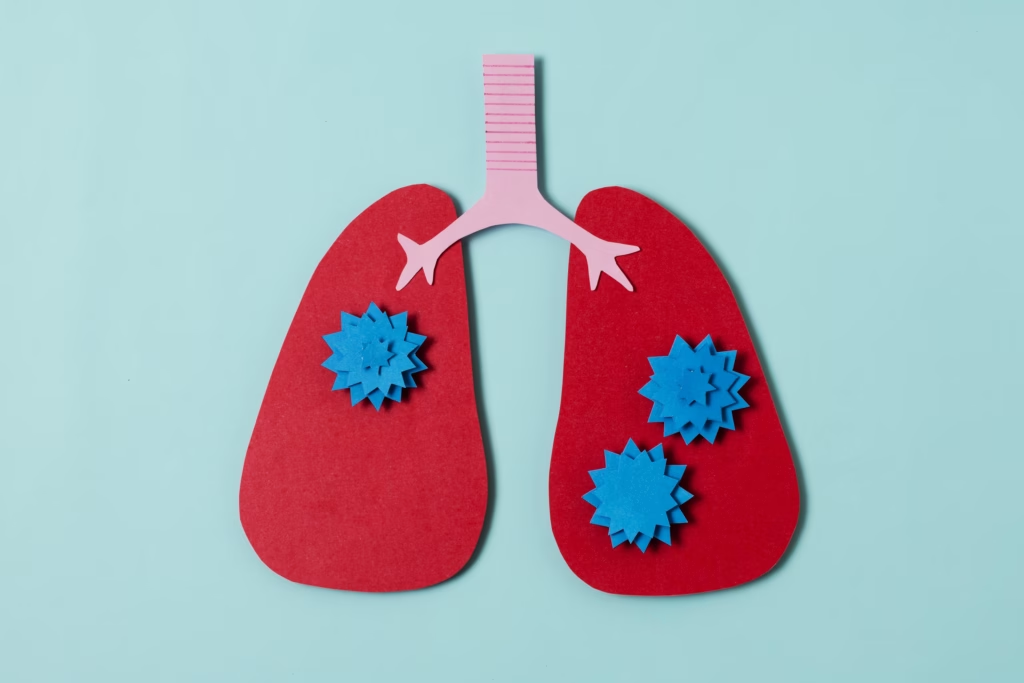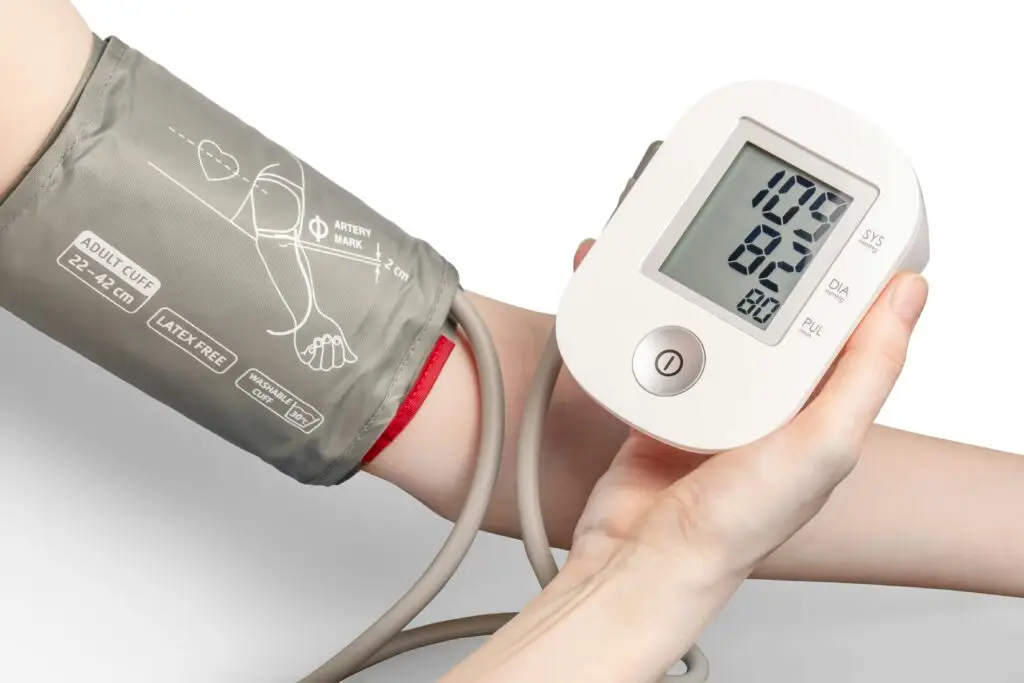
Chronic obstructive pulmonary disease (COPD) is a lung condition that happens when the lungs become inflamed, damaged, and with narrowed airways. Globally, over 400 million people have been diagnosed with COPD, even though it’s still an under-researched disease. Most people live with it for years with either a misdiagnosis or no diagnosis at all. This progressive, life-altering illness ranks as the third leading cause of death worldwide, claiming millions of lives each year due to complications like respiratory failure and heart issues. Imagine struggling to breathe during simple tasks like walking or eating, COPD turns everyday life into a battle, but early detection through pulmonary function tests can change the trajectory, potentially adding years to your life and improving quality. Don’t wait for symptoms to worsen, understanding this obstructive lung disease now could save your lungs and your future.
Table of Contents
- Symptoms
- Causes of COPD
- Types of COPD
- COPD Stages
- Treatments
- Word from Doctor Zara
- Frequently Asked Questions
Symptoms
Chronic obstructive pulmonary disease is associated with a number of symptoms that often develop gradually, making early signs of COPD in nonsmokers easy to overlook as mere fatigue or aging. These symptoms stem from the lungs’ inability to fully expel air, leading to shortness of breath and reduced oxygen intake, which can worsen during physical activity or infections. Recognizing them early is key to preventing progression, as untreated
COPD can lead to frequent exacerbations or flare-ups that require emergency care. Symptoms include:
- Shortness of breath, especially during everyday activities
- Persistent chest cough with phlegm (often called a “smoker’s cough”)
- Frequent chest pains or tightness
- Persistent wheezing (a whistling sound when breathing)
- Breathlessness (a more severe form of shortness of breath during exertion)
To Note: Is wheezing a symptom of COPD? Yes, it’s common due to narrowed airways.
Causes of COPD
COPD pathophysiology involves chronic inflammation and permanent damage to the airways and alveoli, leading to obstructed airflow and difficulty breathing. This obstructive lung disease is caused by a combination of environmental exposures, lifestyle factors, and genetic predispositions that cumulatively harm lung tissue over time. Understanding these causes is essential for prevention, as most cases are linked to avoidable risks like smoking or pollution.
Smoking
Smoking is the primary cause of COPD, as the toxins in cigarette smoke irritate and inflame the lungs, destroying the cilia that clear mucus and leading to chronic bronchitis and emphysema. Over time, this damage reduces the lungs’ elasticity,air trapping ability and causes shortness of breath. Smokers are up to 13 times more likely to develop COPD than nonsmokers. Passive smoking or exposure to secondhand smoke also increases risk through inhaling of similar harmful particles, which can trigger the same inflammatory response in nonsmokers who live with smokers. Quitting smoking at any stage can slow progression, but the damage is often irreversible.
Inhaling Harmful Substances
Inhaling harmful substances like dust, fumes and chemicals from workplaces such as construction sites, factories, or farms can cause COPD by triggering long-term lung inflammation and scarring. These irritants, including silica dust or chemical vapors, damage the airways similarly to smoking, leading to mucus buildup and narrowed passages over years of exposure. Occupations with poor ventilation amplify the risk and even short-term high exposure can accelerate onset in susceptible individuals.
Family History
Family history plays a role in COPD risk, as inherited traits can make lungs more vulnerable to environmental damage, increasing susceptibility if multiple relatives have the disease. If parents or siblings have COPD, especially without heavy smoking history, it suggests a genetic component that amplifies the effects of irritants.
Genetics
Genetics contribute to COPD through conditions like alpha-1 antitrypsin deficiency, a rare inherited disorder affecting about 1% of cases, where altered genes reduce protective proteins in the lungs, leading to early emphysema even in nonsmokers. Exposure to environmental factors can mutate or activate these genes, worsening lung damage and accelerating disease progression.
Asthma
Asthma, though often confused with COPD due to similar symptoms like wheezing and shortness of breath, can actually be a cause of COPD when poorly controlled over time, leading to permanent airway remodeling. The overlap, known as asthma-COPD overlap syndrome (ACOS), involves shared genetic and inflammatory pathways that make asthma patients more prone to developing irreversible obstruction.
Types of COPD
There are two main types of COPD, (Emphysema and Chronic Bronchitis), though most people with COPD have both emphysema and chronic bronchitis, creating a spectrum of symptoms from mucus production to alveolar destruction. This combination makes COPD a complex condition requiring tailored management.
Emphysema
Emphysema, this type of COPD involves the gradual destruction of the alveoli, the tiny air sacs in the lungs responsible for oxygen exchange. When the air sacs are destroyed, the air gets trapped and consequently, the lung elasticity is reduced. As walls between alveoli break down, larger air spaces form which make exhalation difficult and cause hyperinflation of the lungs. This type of COPD is often linked to smoking, where toxins destroy lung tissues.Patients with emphysema often develop a barrel-shaped chest and experience progressive breathlessness.
Chronic Bronchitis
Chronic bronchitis, this type of COPD is one which is characterized by excessive mucus production and a persistent cough lasting at least three months in two consecutive years. Over time, the inflamed airways narrow, trapping mucus and leading to frequent infections and exacerbations. Smoking and pollutants exacerbate this, damaging the cilia and promoting bacterial growth. Symptoms include productive cough and fatigue, often worsening in winter.
COPD Stages
There are basically four stages of chronic obstructive pulmonary disease based on the GOLD staging system for COPD, which classifies severity using pulmonary function test results explained through the FEV1/FVC (Forced Expiratory Volume in 1 second) ratio for COPD diagnosis, where a ratio below 70% post-bronchodilator confirms obstruction. These stages guide treatment and outcomes. Below are the detailed stages of COPD, helping patients understand life expectancy and management.
Stage 1 (Mild COPD)
Mild airflow limitation, often mistaken for normal aging. Patients may notice chronic cough or slight breathlessness.
- FEV1 (Forced Expiratory Volume in 1 second) : 80 percent(%) or above
- Life Expectancy: Often close to normal if treated early.
- Symptoms: Mild cough, occasional mucus.
- Treatments/Medications: Lifestyle changes (quit smoking, light exercise) are key.
Stage 2 (Moderate COPD)
Symptoms become noticeable with daily activities. Patients feel increased breathlessness and fatigue.
- FEV1 (Forced Expiratory Volume in 1 second) : 50 to 79(%) percent
- Life Expectancy: Can still be decades with proper treatment.
- Symptoms: Persistent cough, chest tightness.
- Treatment/ Medications Inhalers and bronchodilators may be prescribed.
Stage 3 (Severe COPD)
Airflow is significantly restricted, and flare-ups are frequent. Patients may require oxygen therapy.
- FEV1 (Forced Expiratory Volume in 1 second): 30 to 49 (%) percent
- Life Expectancy: Shortened, often 8–12 years post-diagnosis if unmanaged.
- Symptoms: Wheezing, severe fatigue, frequent infections.
- Treatments/Medications: Stronger medications and pulmonary rehabilitation are recommended.
Stage 4 (Very Severe COPD)
Airflow is significantly restricted, and flare-ups are frequent. Patients may require oxygen therapy.
- FEV1 (Forced Expiratory Volume in 1 second): below 30 (%) percent
- Life Expectancy: Shortened, often 8–12 years post-diagnosis if unmanaged
- Symptoms: Wheezing, severe fatigue, frequent infections.
- Treatments/Medications: Stronger medications and pulmonary rehabilitation are recommended.
Note 1: How is COPD diagnosed? Through spirometry tests measuring FEV1/FVC
Note 2: How to test yourself for COPD? Home peak flow meters can indicate issues, but professional diagnosis is essential.
Treatments
COPD is a permanent damage that cannot be cured, but currently, lifestyle changes and some medical advancements have been developed to slow the rate of damage to your lungs. Here are some of the possible solutions and treatments for COPD;
Medications
Medications help manage COPD by relaxing airways, reducing inflammation and preventing exacerbations which consequently help improve breathing. Various medications have been developed, including:
- Bronchodilators – Relax airway muscles to ease airflow.
- Inhaled Corticosteroids – Reduce inflammation and prevent exacerbations.
- Combination Inhalers – Provide both bronchodilation and anti-inflammation effects.
Lifestyle Changes
A bad lifestyle, such as smoking or poor diet, is a major factor in causing COPD, and improving your habits will improve your lung function and overall health.
- Quit Smoking: The single most effective way to slow progression.
- Physical Activity: Light exercises such as walking and stretching strengthen the lungs.
Therapy and Rehabilitation
In modern society, scientists, doctors, and researchers have continuously advanced COPD treatments through innovative therapies that enhance lung capacity and reduce symptoms. Some of the treatment-therapies include:
- Pulmonary rehabilitation: A program combining exercise, education, and support to improve endurance; pulmonary rehabilitation exercises at home include arm raises and leg lifts.
- Breathing therapy: Diaphragmatic breathing technique for COPD strengthens the diaphragm, reducing breathlessness by promoting efficient air expulsion.
- Oxygen therapy: For low oxygen levels, supplemental oxygen boosts saturation and energy.
- Noninvasive ventilation: Like BiPAP, aids breathing during sleep or exacerbations.
- Nutritional therapy: Guidance on diet to maintain weight and strength.
Surgeries
Surgeries for COPD are reserved for severe cases where other treatments fail, aiming to remove damaged tissue or improve airflow. Types include:
Bullectomy: Removes large bullae (air pockets) in emphysema to allow better lung expansion.
- Lung volume reduction surgery (LVRS): Removes damaged upper lung portions, improving elasticity for selected patients.
- Lung transplant: Replaces diseased lungs with healthy ones for end-stage COPD.
- Bronchial rheoplasty: A newer procedure reducing mucus via energy delivery to airways.
Word from Doctor Zara
It’s always important to take care of your health by stopping bad health habits such as smoking and also being mindful of your environment. COPD is a deadly and painful disease that alters your way of life, it is thus very important that you see your doctor any time you observe any of the symptoms. If you need quick talk with a professional medical doctor, you can reach me at drzaramulla@gmail.com. This is not a substitute to making an appointment with your doctor for thorough screening.
Frequently Asked Questions
Q: What is the difference between emphysema and COPD?
A: Emphysema is a specific type of COPD involving damage to air sacs, while COPD is the broader term including emphysema and chronic bronchitis.
Q: COPD flare-up vs exacerbation?
A: They refer to the same thing, a sudden worsening of symptoms often triggered by infection or pollution.
Q: Early signs of COPD in nonsmokers?
A: Include mild cough, fatigue, and occasional shortness of breath, often from pollution or genetics.
Q: Pulmonary function test results explained FEV1 FVC ratio for COPD diagnosis?
A: FEV1/FVC below 70% after bronchodilator indicates obstruction; lower values mean more severe COPD.
Q: What is the GOLD staging system for COPD?
A: It’s a global standard classifying COPD into four stages based on FEV1 percentage for prognosis and treatment.
Q: Home exercises for COPD breathing?
A: Try pursed-lip breathing, walking, or seated marches to strengthen lungs and reduce breathlessness.
Q: How to use a spacer with an inhaler for COPD?
A: Attach spacer to inhaler, shake, exhale, press once, inhale slowly, hold breath for 10 seconds.
Q: Low oxygen levels COPD when to worry?
A: Worry if below 88% at rest; seek immediate care to prevent complications.
Q: Diaphragmatic breathing technique for COPD?
A: Lie down, hand on belly, inhale through nose to raise belly, exhale slowly through mouth.
Q: Foods to avoid with COPD and mucus?
A: Avoid dairy, fried foods, and salt, as they increase mucus; opt for fruits and veggies.

